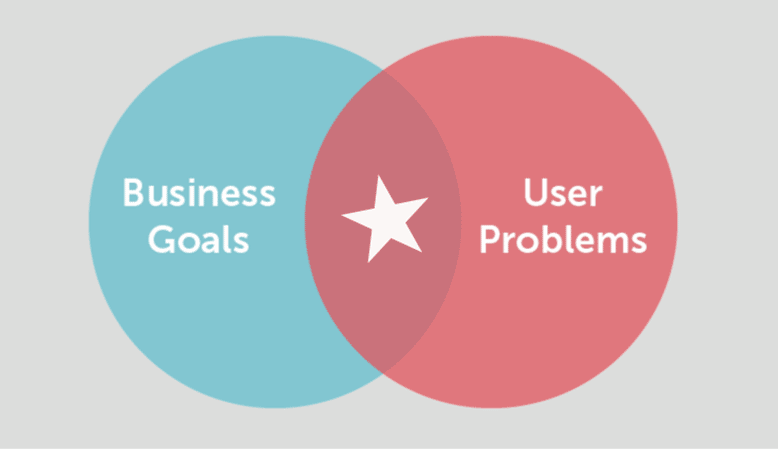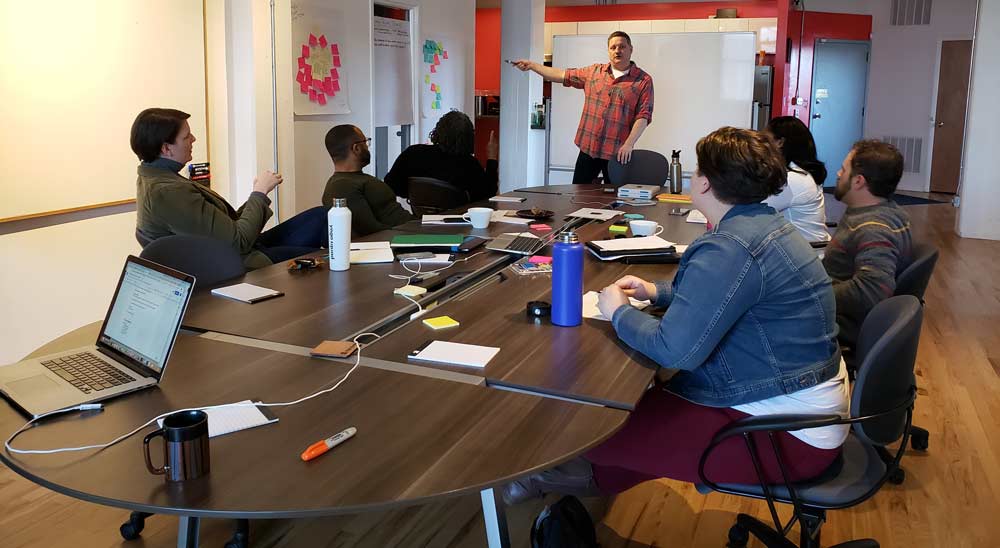Designing for Multiple Audiences
Understanding an organization’s business goals and stakeholder needs drives discovery during up-front strategy and product roadmapping sessions. In this post, we explore how to design digital products and services for multiple audiences while avoiding potential pitfalls.
A website for a pizza restaurant needs to sell pizza. Pizza restaurant website visitors expect to view store hours, a menu, contact information, and place an order online. Listing these goals at the start of every project is the first step in good content strategy and design.
However, what if you need to serve multiple audiences? How do you design intuitive experiences that meet primary customer needs without alienating others?

Multiple Audiences, Many Goals
Determining goals might be a simple task when you have a relatively simple business structure, like a pizza restaurant. However, many organizations need to address competing needs of multiple audiences on a single site, or even page. This is especially true of nonprofit and government organizations, which have long lists of different stakeholders, each with distinct goals.
For example, a professional organization may need to address:
- Members seeking information about member benefits
- Potential members inquiring about membership
- Potential sponsors looking for sponsorship rates
- Board members looking for meeting times
- Lawmakers looking for policy information
- Job seekers applying for positions
- Staff members logging in
Large organizations often suffer under the illusion that if someone doesn’t see content related to their immediate needs on the home page, they’ll exit the site. This simply isn’t true. Users will scroll or click through to find the right information as long as it’s intuitive. So not all content has to live on the home page.
Knowing this, how do we determine the most important audiences for a particular website? How might we optimize website or home page content for them without alienating others?

Understanding Website Stakeholders
Primary users or target customers are important, but they’re not the only stakeholders relevant to your website. When we focus only on their needs, we run the risk of overlooking the needs of other stakeholders. However, you also can’t please all of the people all of the time. What’s the best way to design for multiple audiences?
To address this, we often recommend a combination of collaborative stakeholder exercises delivered in workshop format and followed up by research activities to validate (or refute) assumptions.
Stakeholder Mapping
Mapping the material needs of stakeholders in your business ecosystem can help you create better solutions. Learn more in this guide.
You might start by listing out how the new website should drive your organization’s business goals:
- We need to increase donations to our nonprofit
- The site should drive more qualified leads for our business
- We’d like to increase membership subscriptions to our association
- We need to improve customer support
- And so on…
Next, workshop attendees might make a list of all potential audiences and their goals for using the website. For example, a museum might have the following :
- Visitor looking for exhibition information or hours
- Potential donor looking for donation information
- Current or potential volunteer looking for volunteer information
- Job applicant looking for open positions
- Board member seeking financial or meeting information
- Event coordinator seeking event information
- Member of the press looking for recent releases
- Fan seeking social media information
- Children participating in online learning programs
- Potential or current sponsor seeking sponsorship information
Next, determine whose needs you’re going to try to meet with specific page content. While you may have as many as ten different types of people accessing your site, not all are “primary” users. Job seekers, for example, won’t need a clear call to action on the home page, as they’ll know to search for a relevant link in the footer.
Some ways to identify these stakeholders include:
1. Group audiences and goals based on site architecture.
For example, a job applicant looking for job information and an applicant looking to apply would go to the same area: careers. Similarly, be careful not to lump together the same audience with different goals. For example, a restaurant patron may want business hours to make a reservation, book a private event, look at a menu, or order online. All these are distinct goals that should be served by different content types.
2. Separate groups who don’t visit your website through the home page.
Consider all potential secondary entry points. For example, donors to Kickstarter campaigns hardly ever see Kickstarter’s home page. Consider various entry points and optimize those landing pages for ideal user experience rather than including those calls to action on the home page.
3. Are there visitors for whom a visit to the site becomes routine?
You won’t need to design home page content for them because they will quickly learn how to find what they need. For example, people who want to log in quickly figure out where to do so (often in the top right corner).
Create More Inclusive Personas
Personas are helpful research tools, but they’re not perfect. Learn how they can drive more inclusive and effective digital solutions.
Drilling Further Down
Even by using these methods to filter content, you may still have several competing audience groups. You can design a home page that works well for multiple audiences. However, it is likely that not everyone’s needs will be met.
Here are some methods to identify website stakeholders:
1. Create a poll for stakeholders.
Present an edited list and ask internal—and, if possible, external—stakeholders to vote on who they think is the most important audience. You’ll be surprised sometimes at the quick consensus!
2. Who is the most important audience for conversions?
For example, a library may be tracking how many catalog searches are performed in a month, or how many e-books are borrowed. Therefore those activities might be prioritized over finding story time hours on the website.
3. Who most frequently accesses your content?
For museums, donors may be the most important group when it comes to conversion rates, but visitors seeking exhibit information and hours make up the majority of traffic, so treating them as a primary audience makes sense.
4. Who’s not represented?
To reduce risk and potential unintended consequences, dedicate specific workshop time to identify the needs of other stakeholders in your business ecosystem.
Stakeholders most often left out of these conversations include:
- People with physical and cognitive disabilities
- Non-native English speakers
- People with older devices or those in rural areas
- Older people
- Members of Indigenous, LGBTQ+, or other often marginalized communities
- The planet (yes, the environment is a stakeholder too.)
Considerations for each group listed above—and any others you might identify—are important to include as part of this process to discuss how best to meet their needs and ward off potential unintended consequences before they occur.
5. Level of confidence
Finally, including various stakeholder perspectives and lived experiences in a workshop will help you design more inclusive experiences. However, it is entirely possible that you overlooked something without realizing it. Assigning a level of confidence scale to answers provided can be quite useful.
After each exercise, ask participants about their level of confidence in the answers they provided. Encourage honesty. Rank answers on a scale of zero to five with five being most confident. If the level of confidence is low, you might need to conduct more research through stakeholder interviews or other means.
Can You Rely on Standard Placement?
Also, you don’t need to break convention. Certain interface elements are commonly placed in the same area of a page. You may not need to carve out prime real estate on a home page for them. Examples include:
- Login buttons and search fields: usually upper right
- Career, contact, and press information: usually in the footer
- Donate buttons: often in the top right corner.
If you filter these intuitive locations, you can reduce the amount of content that requires special consideration.
Testing Solutions
Similarly, if you’re unsure about the best path forward, test multiple options. Common testing methods, like wireframes and rapid prototypes (pre-launch) and A/B testing (post-launch), can help you better understand what does and doesn’t resonate with the people using your website.
In fact, many organizations incorporate ongoing testing into product management practices to focus on long-term continuous improvement. Using these methods can help you make more educated decisions about content and design choices and measure progress toward your goals over time.

You Have To Choose
A website that tries to serve too many people ultimately serves no one. Designing websites for multiple audiences can easily lead to a jumbled mass of content with no clear calls to action and confusing navigation. However, as noted above, there is also risk in designing a website only for your primary target customer. Finding the right balance can be tricky.
Thankfully, content and UX design standards, coupled with readily available testing tools, can help you make continuous improvement toward maintaining this balance.
Inclusive Experience Design
Learn more about how Mightybytes uses inclusive design strategies to help our clients strengthen stakeholder relationships while meeting their business goals.